Use these tactics
Let’s explore these tactics with an example: Pip’s Cafe
The cafe recently opened and needs to prepare for a summer opening by prioritizing tasks, organizing basics, and planning resource allocation. See below how Pip’s Cafe uses these tactics to solve their challenges.
1
Use Human Network to uncover your network
Use Human Network to uncover your network
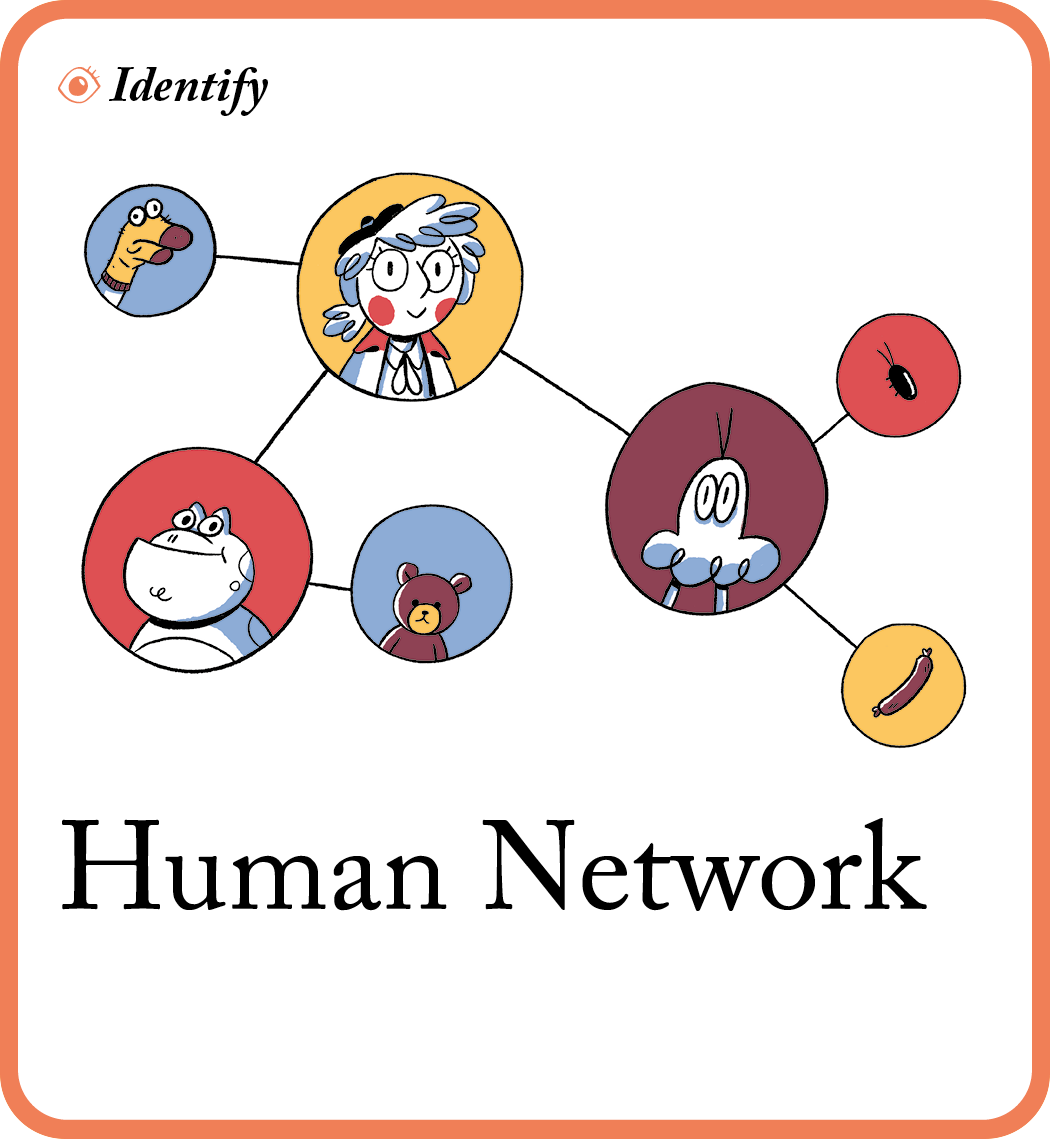
🧠 What’s the goal? Uncover your extended network of stakeholders, so their needs never catch you off guard.
👀 Why it’s important: Use this tactic to find and account for any secret stakeholders with the power to make your project crash and burn unexpectedly. There are always more stakeholders than you think – but who could they be?!
💡 Tip: unmet needs always have consequences. Even if there’s nothing you can do to meet those needs, it’s worth being aware of them.
Instructions
-
Gather your team and write ‘Our Team’ at the bottom of your workspace.
-
In the space directly above, work together to write down the names of all the individuals and groups who count on your team for something. Make sure to include:
a. People inside the organization. For example: managers, departments, coworkers, etc.
b. People outside the organization. For example: customers, influencers, suppliers, auditors, etc.

-
Go up one more level: for everyone you identified in the last step, who is counting on them? Add more names above your previous answers, then repeat this step, building upward until you hit the edge of your knowledge.
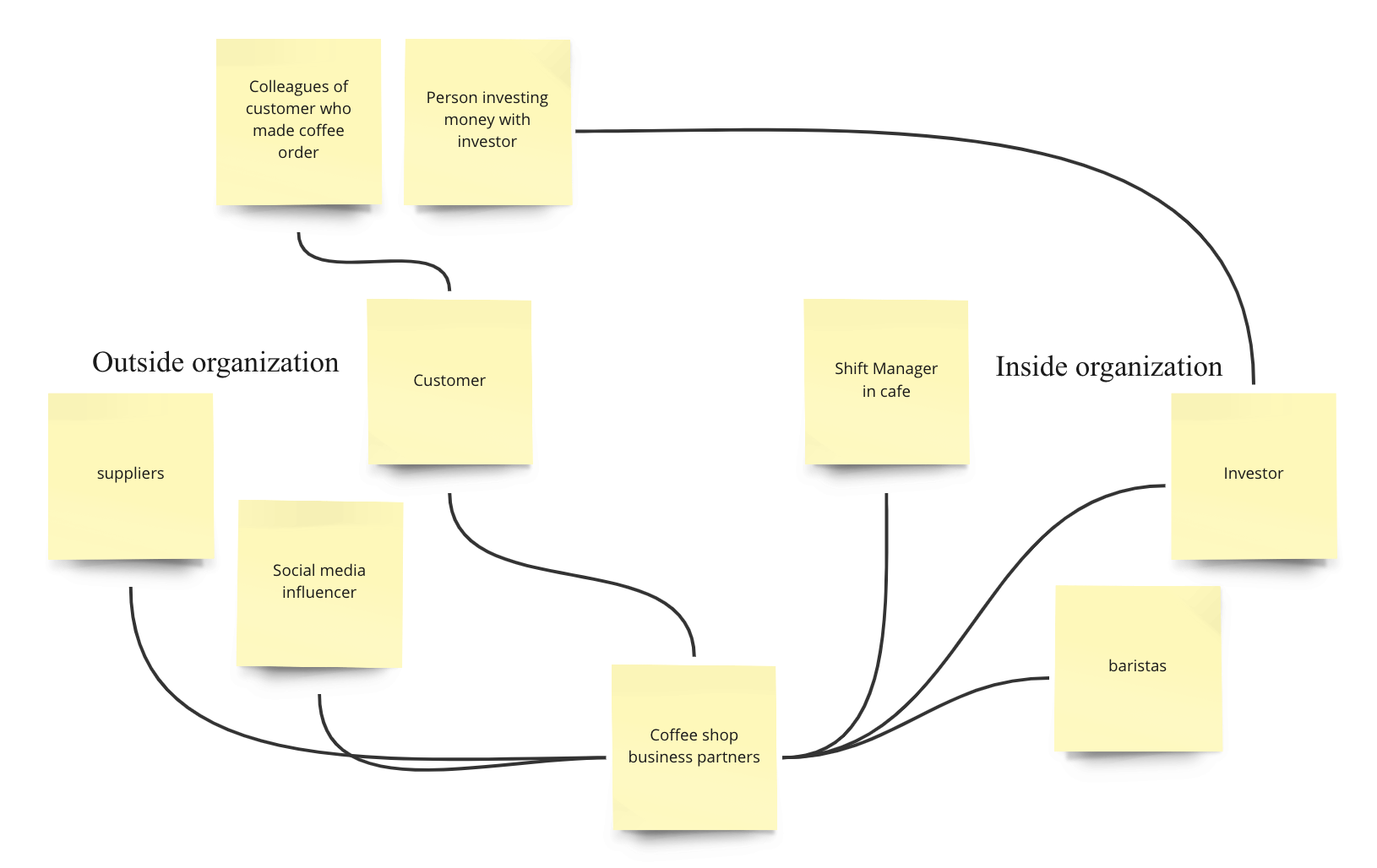
-
Work together to draw lines between names wherever there are relationships. Who is connected to whom?
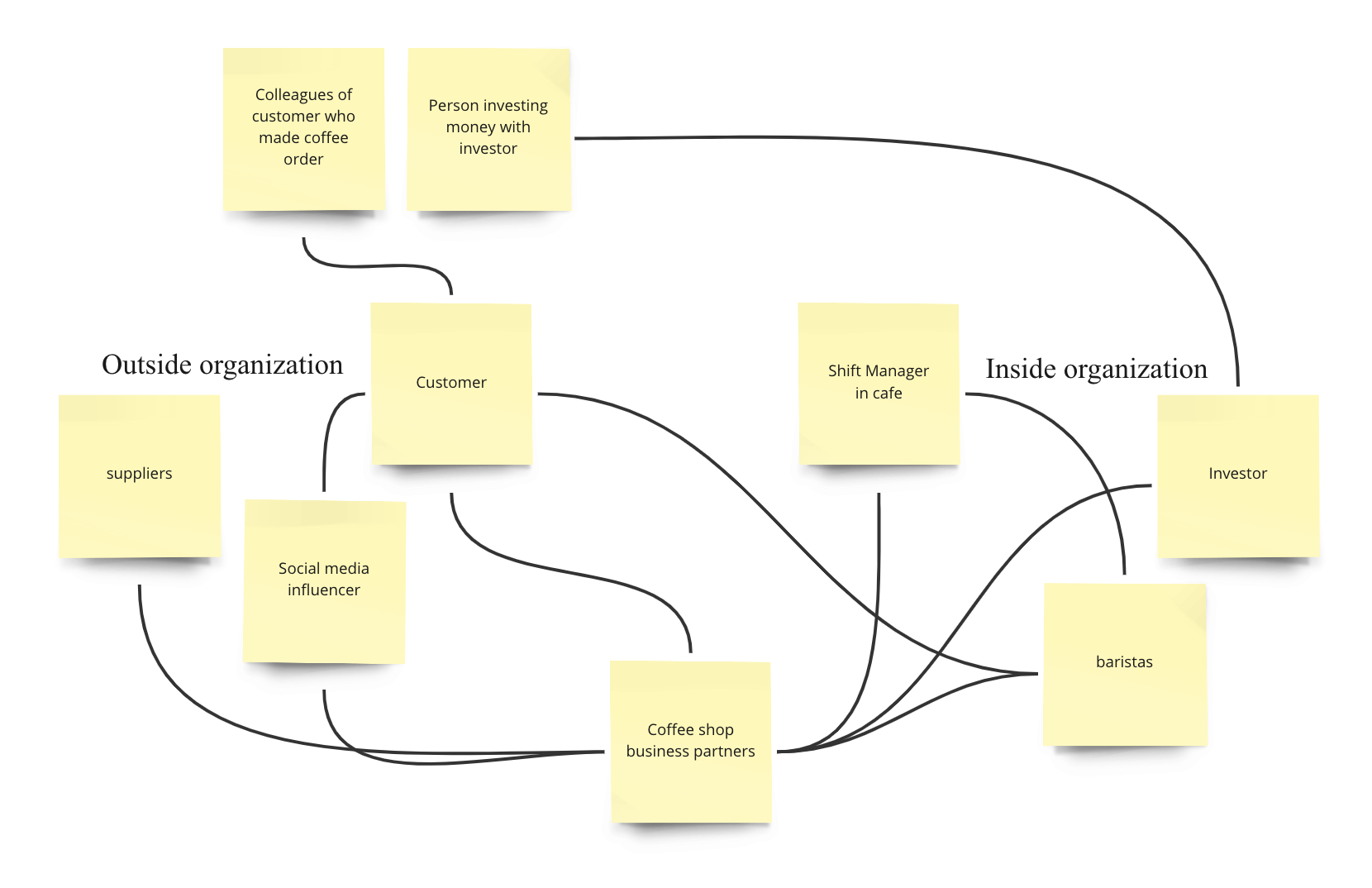
-
Review the whole network as a group, one name at a time. For each name, discuss:
a. What are their 1–3 biggest needs?
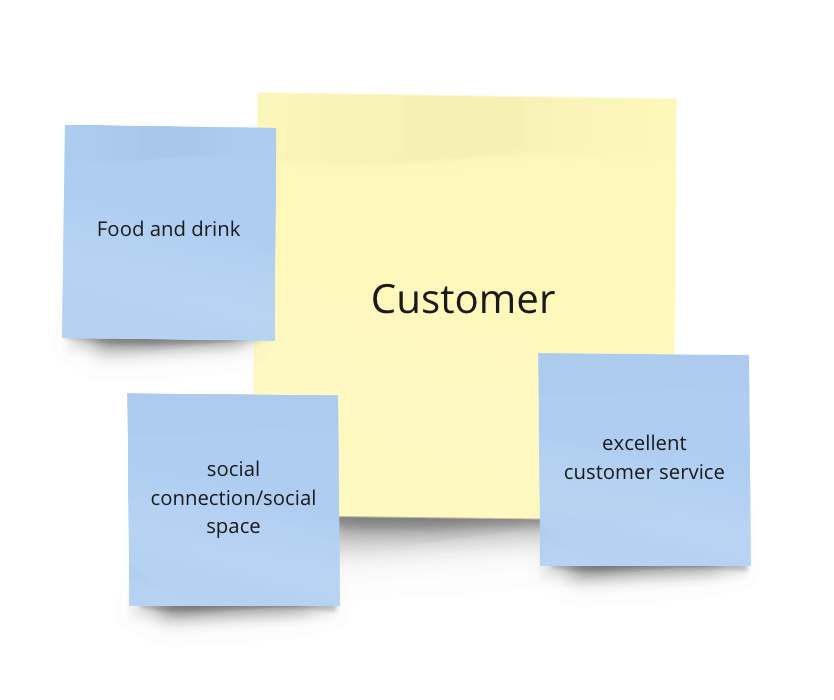
b. What happens if their needs go unmet? Discuss the possible consequences.
c. Are their needs being met right now? Draw a star next to names with unmet needs.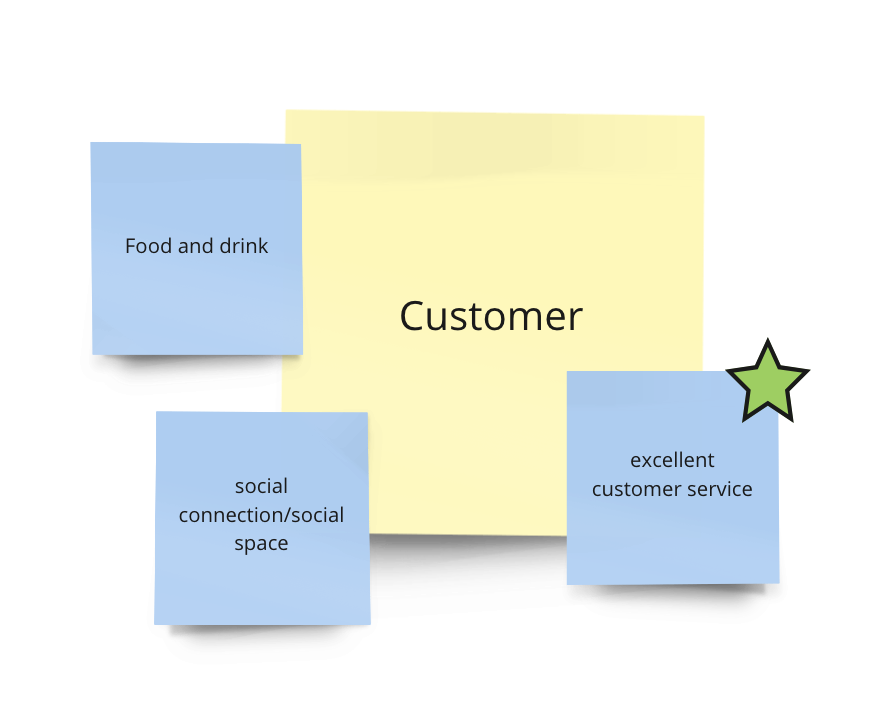
-
Step back and review all the names. Prioritise which unmet needs you want to meet.
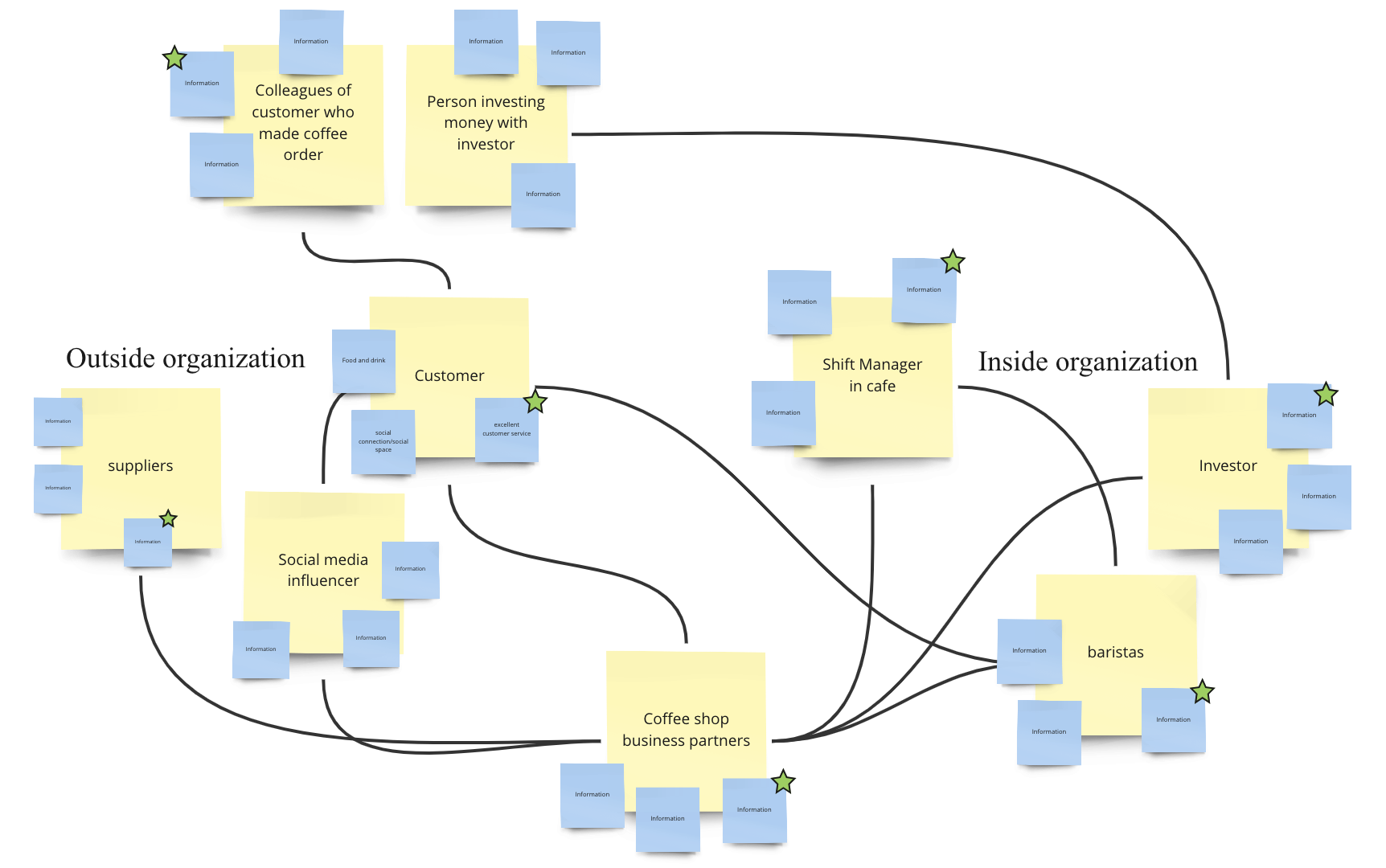
⬇️ In the next tactic, dive deeper into these needs of your organization with Promise Proposal (pick customer or primary stakeholder).
2
Use Promise Proposal to understand peoples needs
Use Promise Proposal to understand peoples needs

🧠 What’s the goal? Understand which needs people expect you to meet, so you make promises you can keep.
👀 Why it’s important: This tactic helps you follow through with your promises to your stakeholders. But even when you don’t make an explicit promise, they might use their expectations to fill in the blanks. And if you can’t keep a real (or imagined) promise? You’d better propose something else.
💡 Tip: treat needs like promises, you either keep your promises or you don’t keep your promises.
Instructions
- In the last tactic, you made a map of all the people connected to you organization, make sure you pick one of your primary stakeholder or the customer from this map for this activity. For our example below, we will use the customer of a coffee shop.
-
As a group, identify the human needs you meet through your work (anything goes). Write them down, one per sticky note. If you get stuck, try listing out specific people first. Who are they, and what do they get from you?
-
Sketch the below template, then sort each sticky note along the scale. Ask “Which number best represents people’s expectations of the promise you’re making?”

-
Assess how well you meet each need. Ask “How well do we fulfill this promise today, given what people expect?”. Vote for each promise.
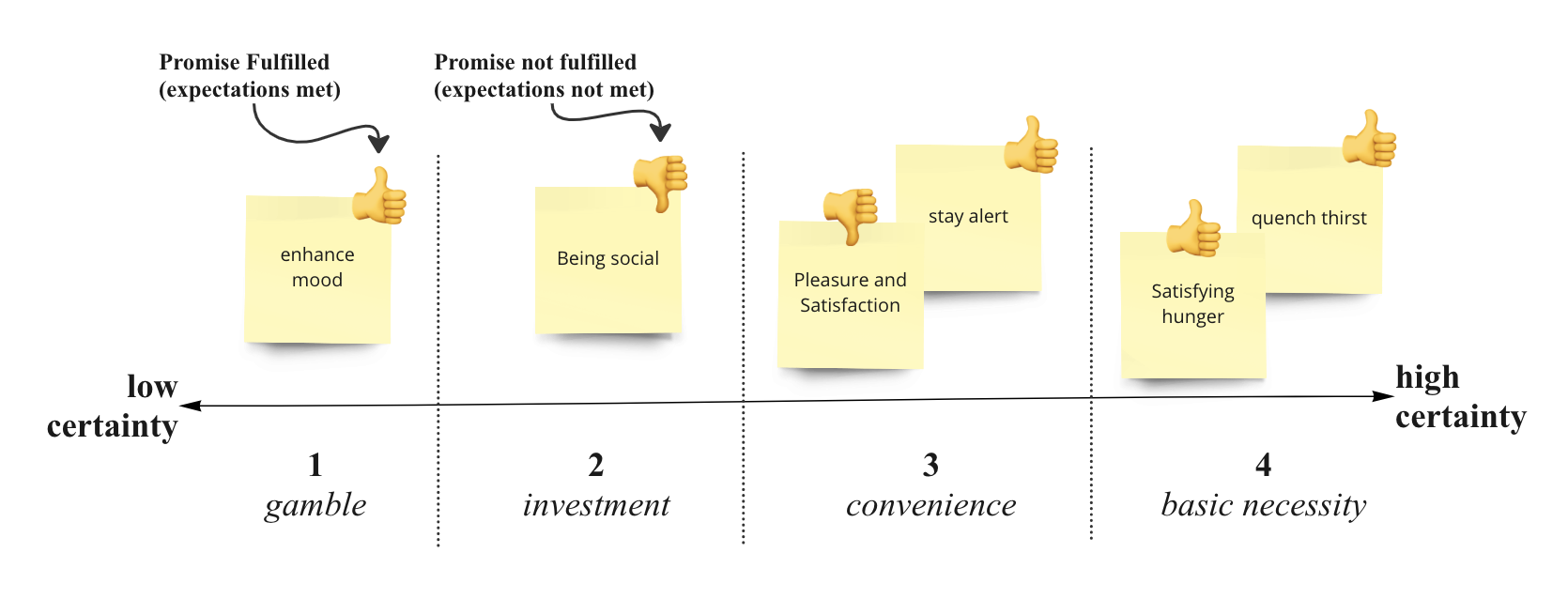
-
Assess whether it’s the right promise to be making. Ask “Is this the right promise to be making?”. Vote for each promise.

a. If you think it is the right promise to make, when means that you need to make sure you’re living up to your promise.
b. If it isn’t, decide together whether to break the promise, renegotiate it, or replace it with something else.⬇️ In the next tactic, pick the needs that require the most work and use those to guide your discussion in Seeking Specifics.
3
Use Seeking Specifics to find the pain points in your organization
Use Seeking Specifics to find the pain points in your organization
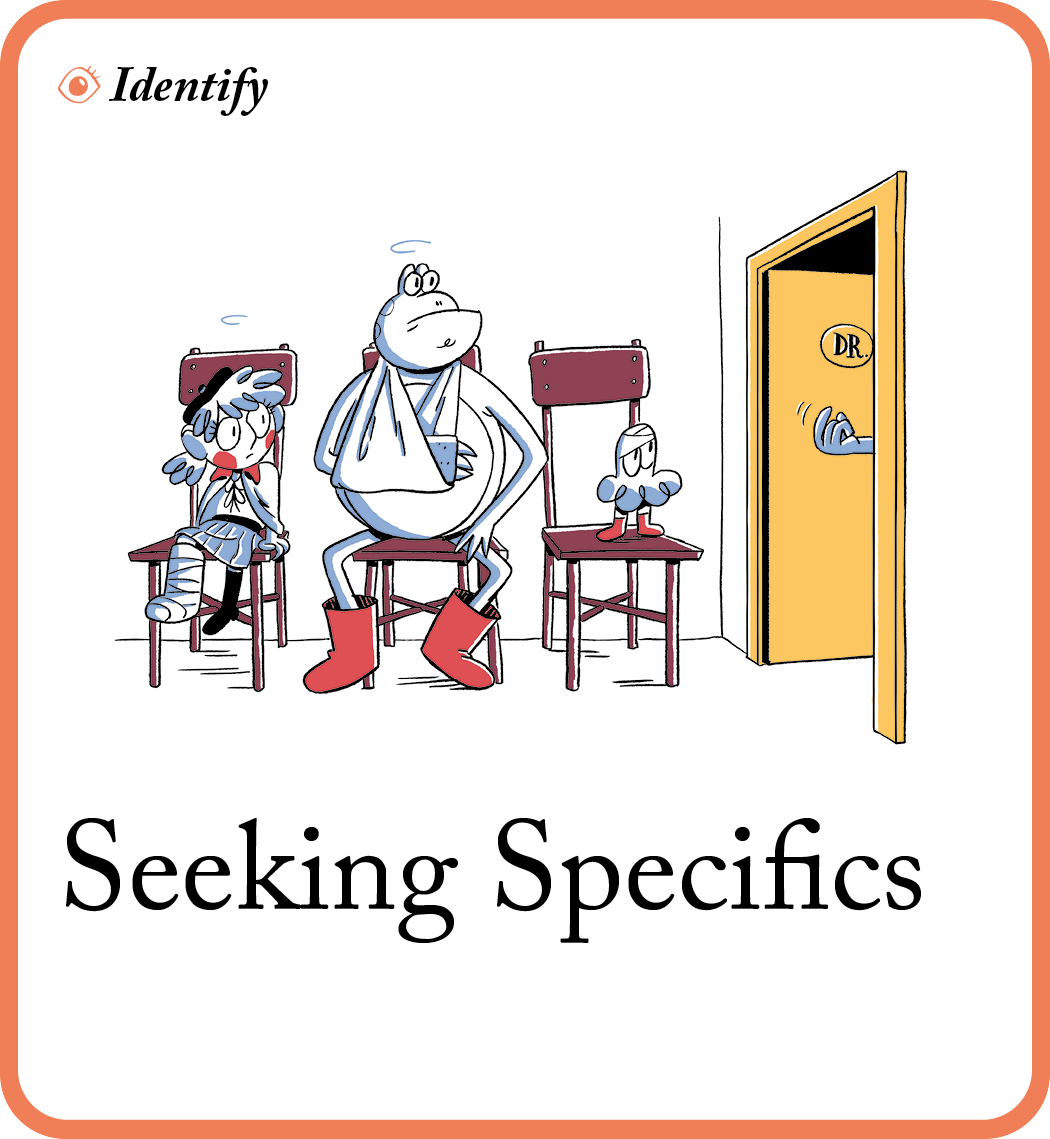
🧠 What’s the goal? Identify all the different parts of your organization, so you can figure out what hurts and get help to make it better.
👀 Why it’s important: This tactic helps you understand all the moving parts in a system, so you can communicate effectively about problems and find a solution, together. Imagine you go to the doctor because you’re in terrible pain. If you say something like ‘my elbow hurts’, you’ll get prompt treatment. If, however, you can’t tell them where the pain is, it will take much longer to get relief. It’s no different at work!
💡 Tip: get comfortable with making guesses; you might not know all the answers. It is okay if you’re wrong.
Instructions
- Take the need(s) from the last tactic that require the most attention, and use this for the activity below. For our example below, we will be using “be social”.
-
Include everything involved in delivering value to your customers, users or other stakeholders to meet their need(s). For example the work you do, practices you follow, technology, knowledge, data or anything else that helps deliver value to the people who depend on you.
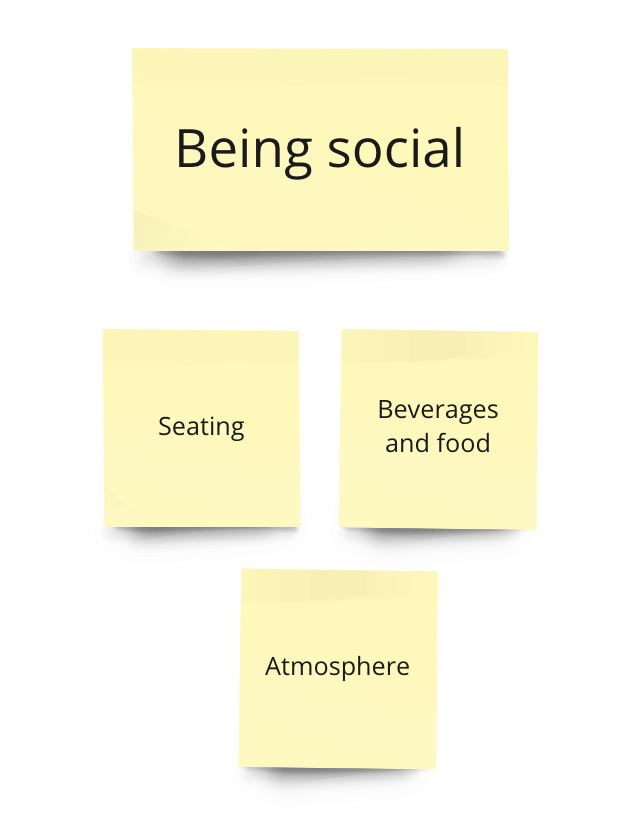
-
Pick one item from that list and break it down into a second list of smaller parts. Repeat this (adding all new items to the same second list) for every item in your first list.
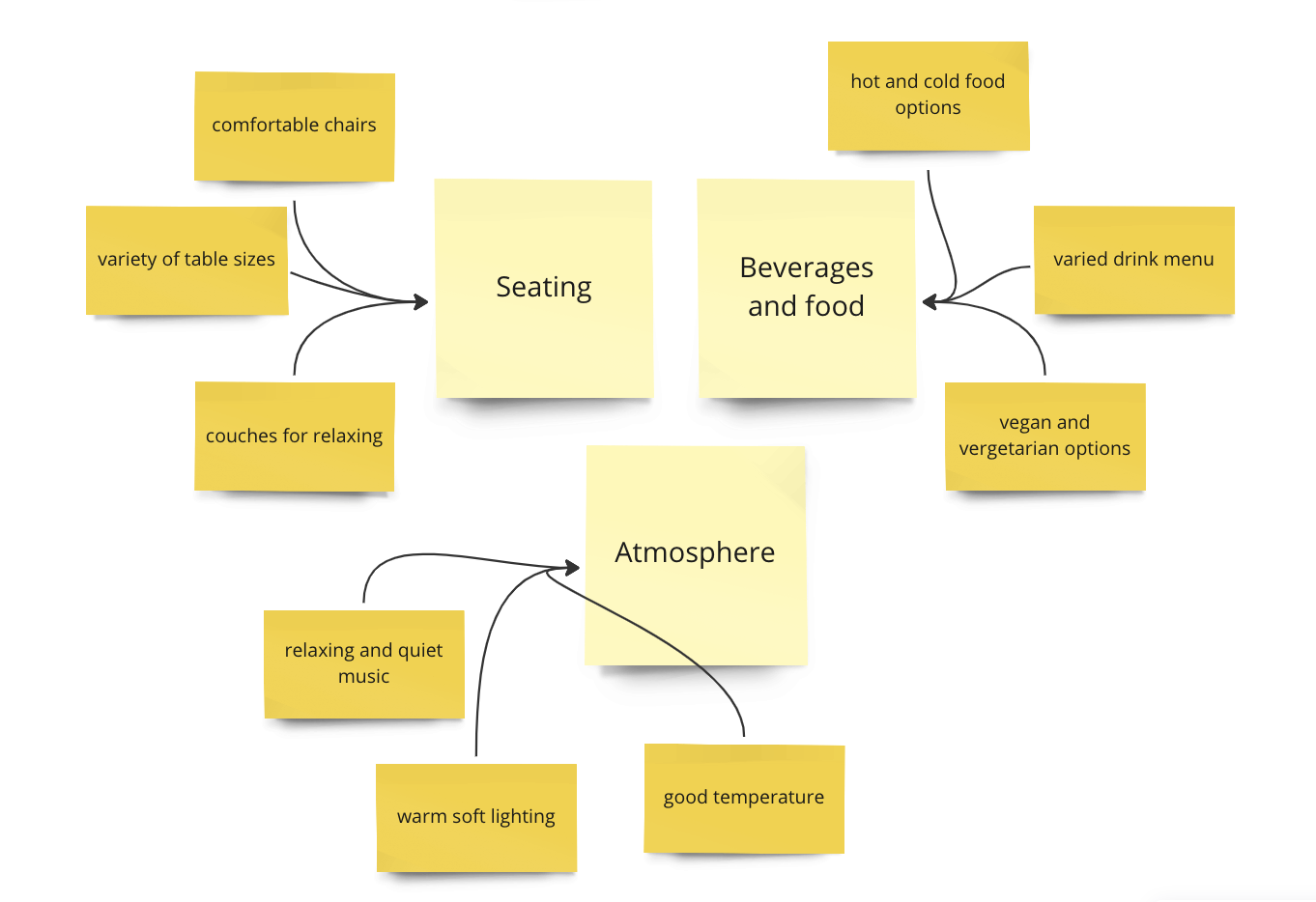
-
Evaluate the health of each of those smaller parts in your second list by rating them on a scale from 1–4, where 1 is languishing and 4 is flourishing. Record this number next to each part.
Tip: if you find it hard to agree on where a part fits on the scale, try breaking it down into further subparts.
Tip 2: make sure everyone understands clearly the definitions of languishing (failing to make progress or be successful) and flourishing (developing rapidly and successfully; thriving).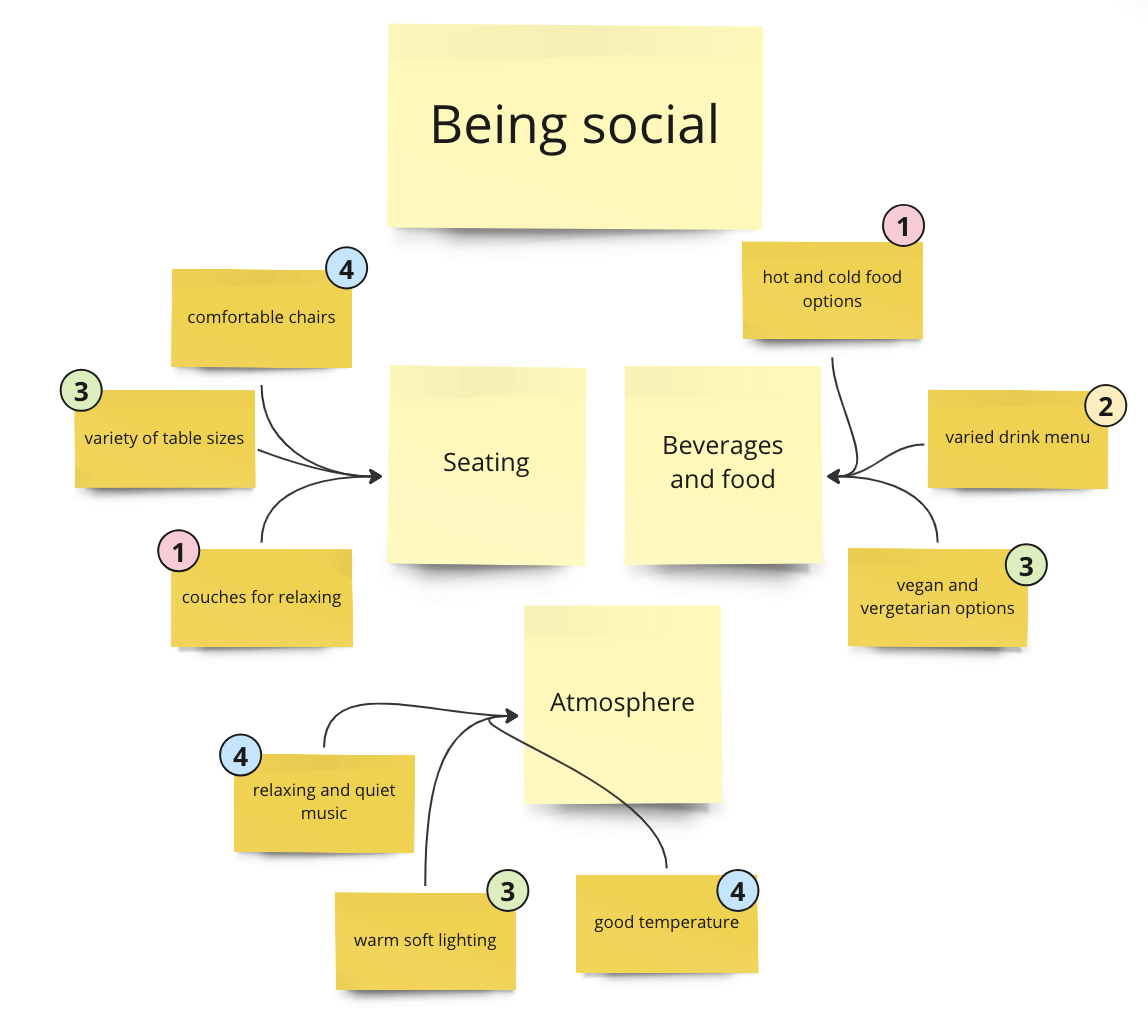
-
Step back and review what you found. Keep in mind which parts hurt the most as you move forward.
⬇️ In the next tactic, with the knowledge of all the different parts of your organization, you will now will see how they all connect together in a Value Chain.
4
Use Value Chain to understand your organizations interconnections
Use Value Chain to understand your organizations interconnections
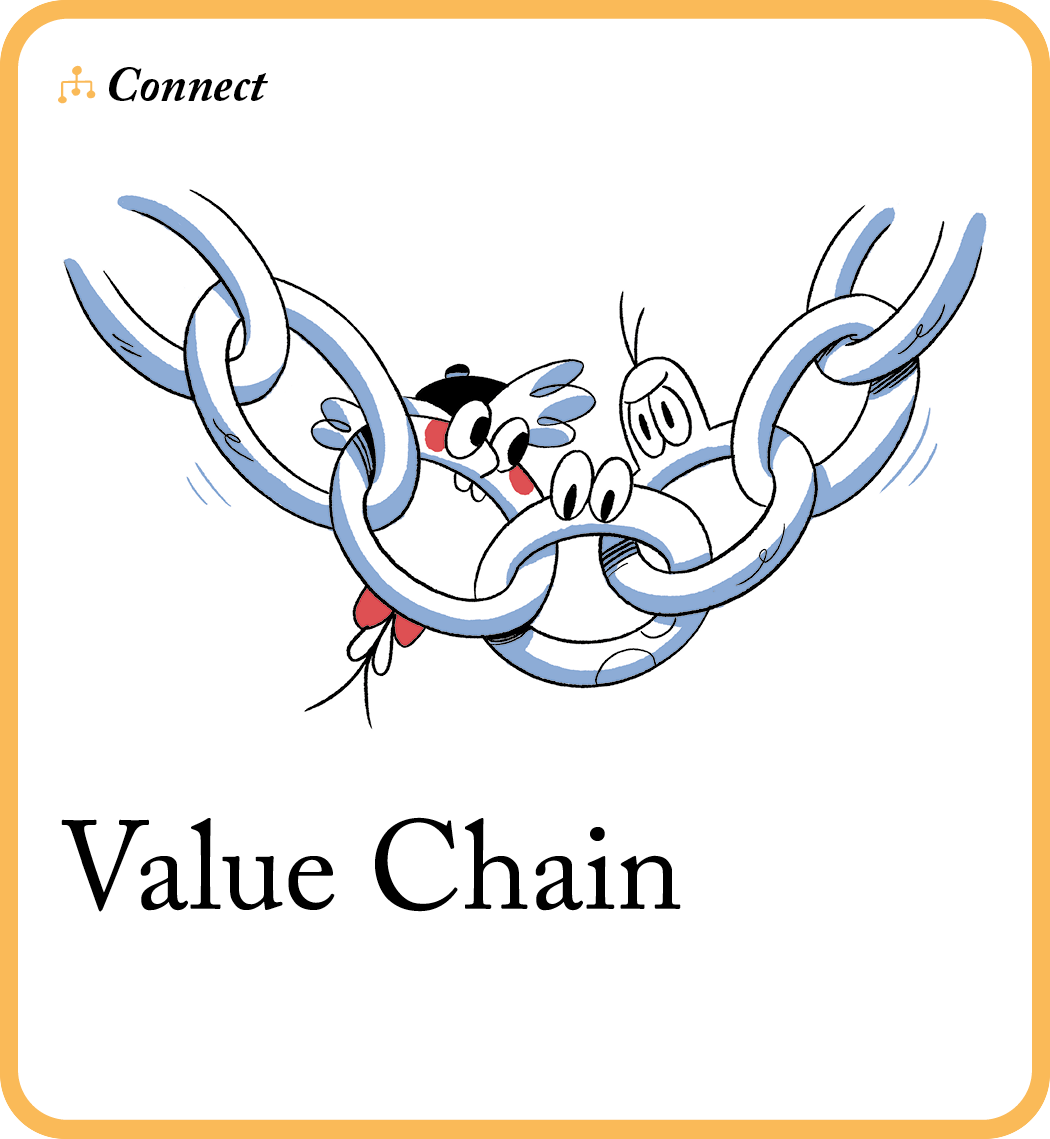
🧠 What’s the goal? Sketch out the system of your organization to understand the relationships between all the moving parts.
👀 Why it’s Important: This tactic helps you to truly understand how things are supposed to work. Sketch your theory about how the system works for others to see, understand and critique.
💡 Tip: you likely know less than you think, but what you learn along the way will be invaluable!
Instructions
- In the last tactic, you identified a the moving parts that affect your customer. Now, we will fit it all together. Remember, you can’t fit everything into the picture all at once. Start with a few parts, and then add more over time.
-
Write the primary stakeholder or customer you chose in Promise Proposal on a sticky note and place it at the top of your workspace. This is our ‘Who’.

-
What do they get? Choose one of the benefits, values or needs from Promise Proposal on a sticky note and place it directly underneath the ‘Who’. This is our ‘What’.
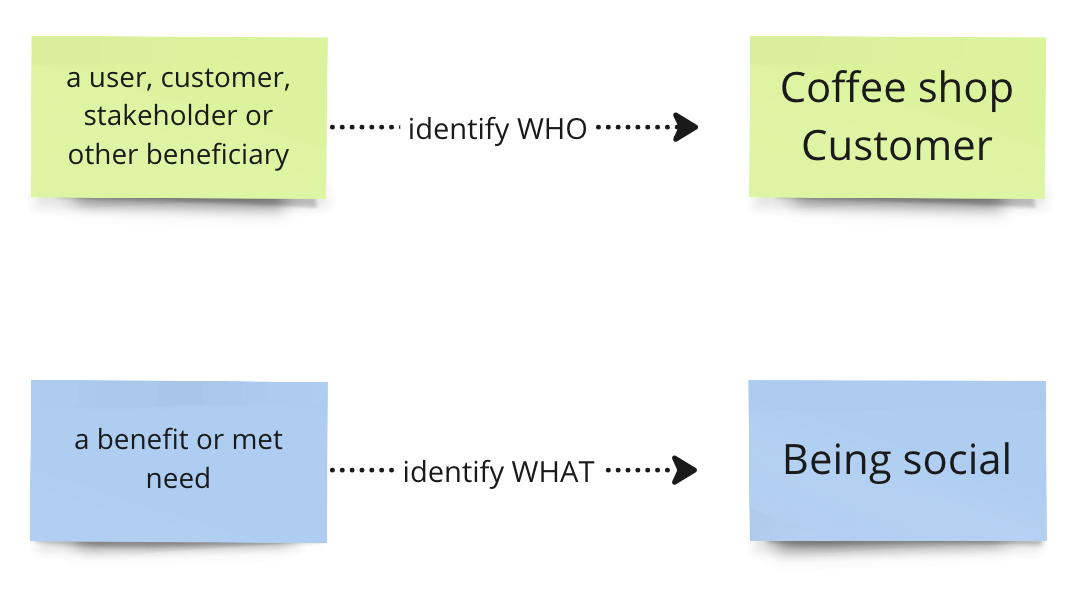
-
How do they get it? Write down one activity that gets performed in order to meet the need on a sticky note and place it underneath the ‘What’. This is our ‘How’.
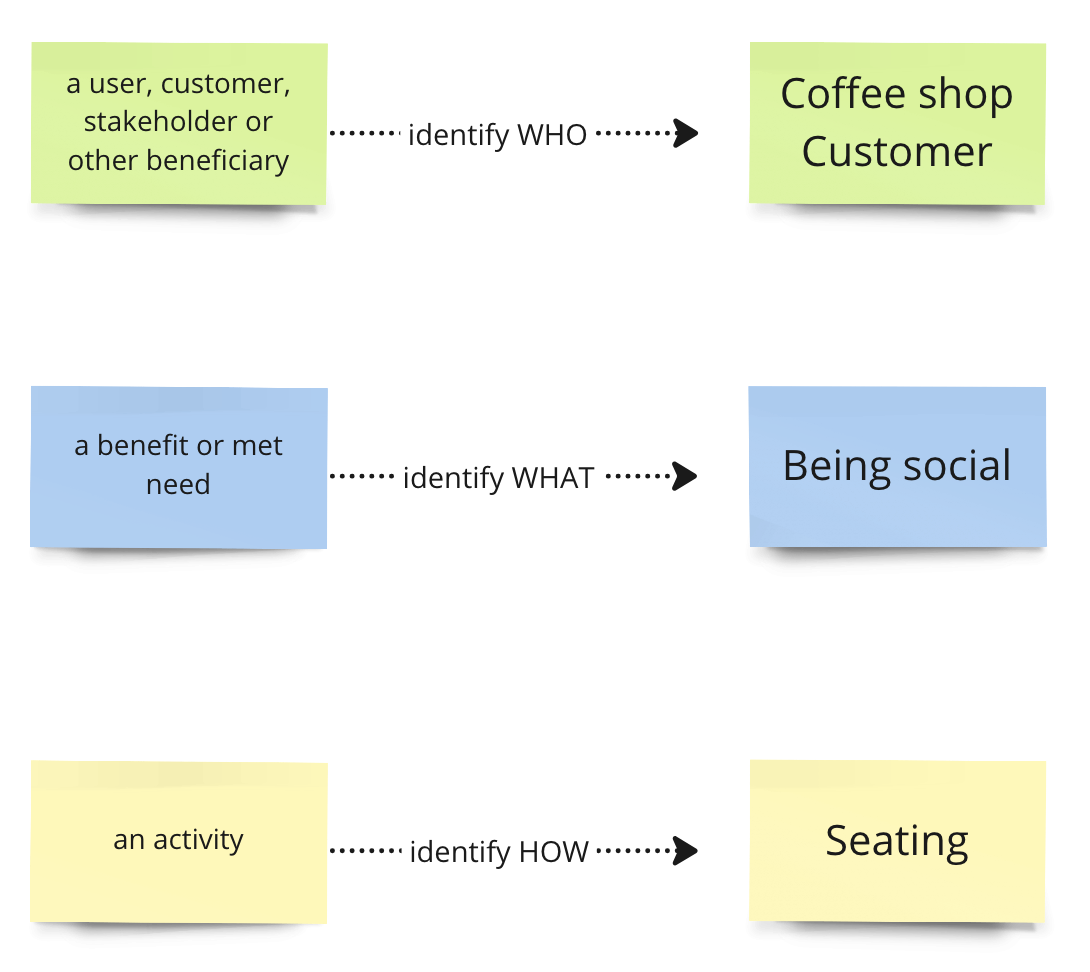
-
Then draw lines connecting the ‘Who’ to the ‘What’ and the ‘What’ to the ‘How’. Test the resulting Value Chain by reading it from top to bottom, replacing each connection with the phrase ‘depends on’.
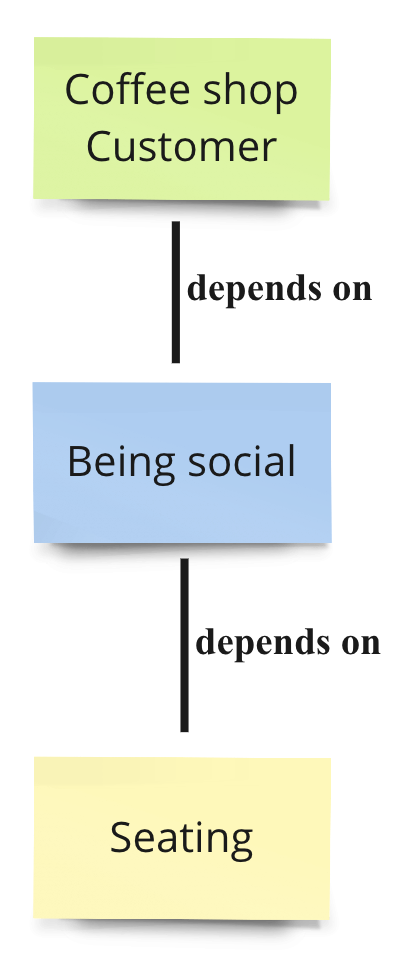
The ‘sentence’ test: does the Value Chain make sense when read out loud as a sentence? If not, change it until it does! “Customer depends on being social. Being social depends on seating.” -
Expand the Value Chain with more Hows, Whats, or even Whos, connecting them together to pass the ‘sentence’ test. Consider adding new kinds of Hows, like technologies, practices, data, knowledge, etc. Reference Seeking Specifics as a menu to pick from to add to your chain. Keep going until you have a convincing design that describes the situation. Then share it more widely for feedback.
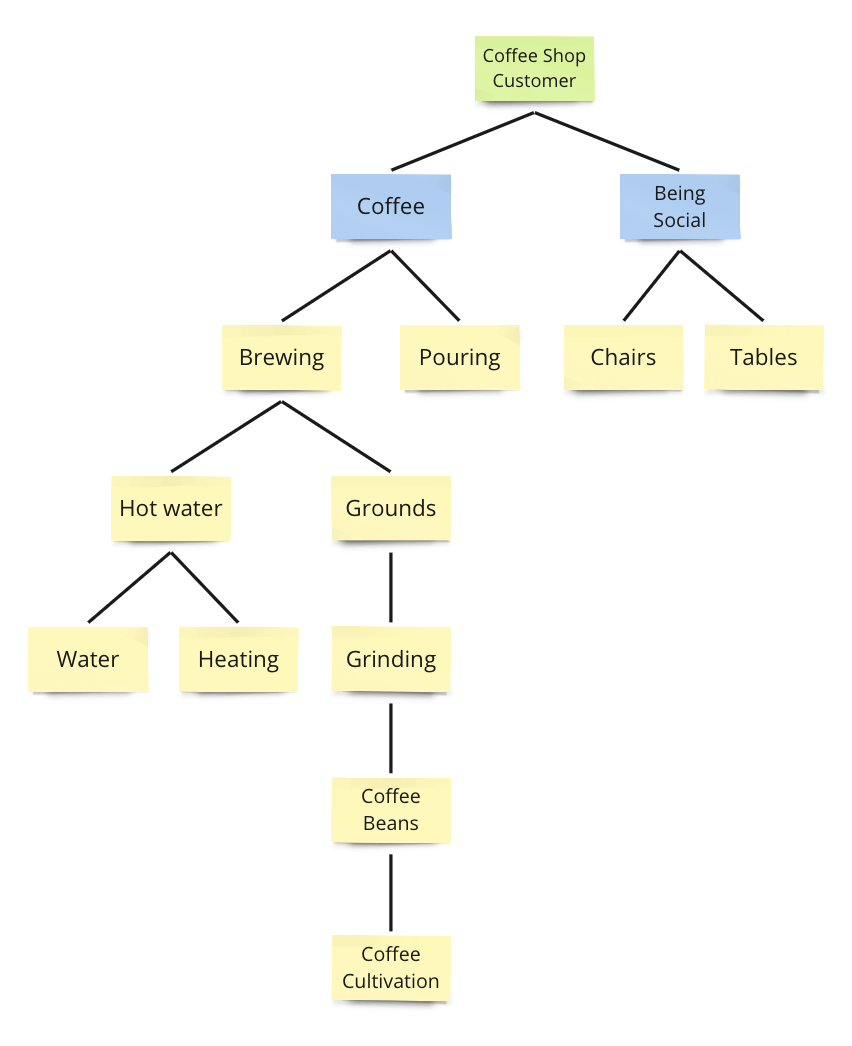
⬇️ Now that you’re done all four tactics its time to zoom out and take a look at the overview of your activities and decide on which actions your organization wants to take.
What ways can I use this recipe?
- 20-minute challenge: choose either Human Network, Promise Proposal or Seeking Specifics and try it out with a colleague.
- The complete loop: this means short, separate sessions for each of the four tactics over an extended period of days, or even weeks.
- Full-day experience: do it all in one go! Spend the day diving deep and use all four tactics, with lots of breaks in-between.
Some tips
- Take small, bold steps every day instead of changing everything all at once.
- Mistakes are important. They’re how you learn! So don’t try to be perfect, but do pay careful attention to failure.
- Think of this Guide as a microscope. You can look through it to explore parts of the situation deeply, but you can’t look at everything all at once. So before you dig in, briefly consider which parts of your work you’d like to explore more deeply.
What next?
Congratulations! You have completed a round of How to build a solid foundation for your organization! But this is only the start. You have honed the skill of uncovering your extended network of stakeholders, understood what needs people expect you to meet, found the pain points in your organization and finally, understood the relationships between all the moving parts of your organization. And now, it is time to put some of your findings into action.

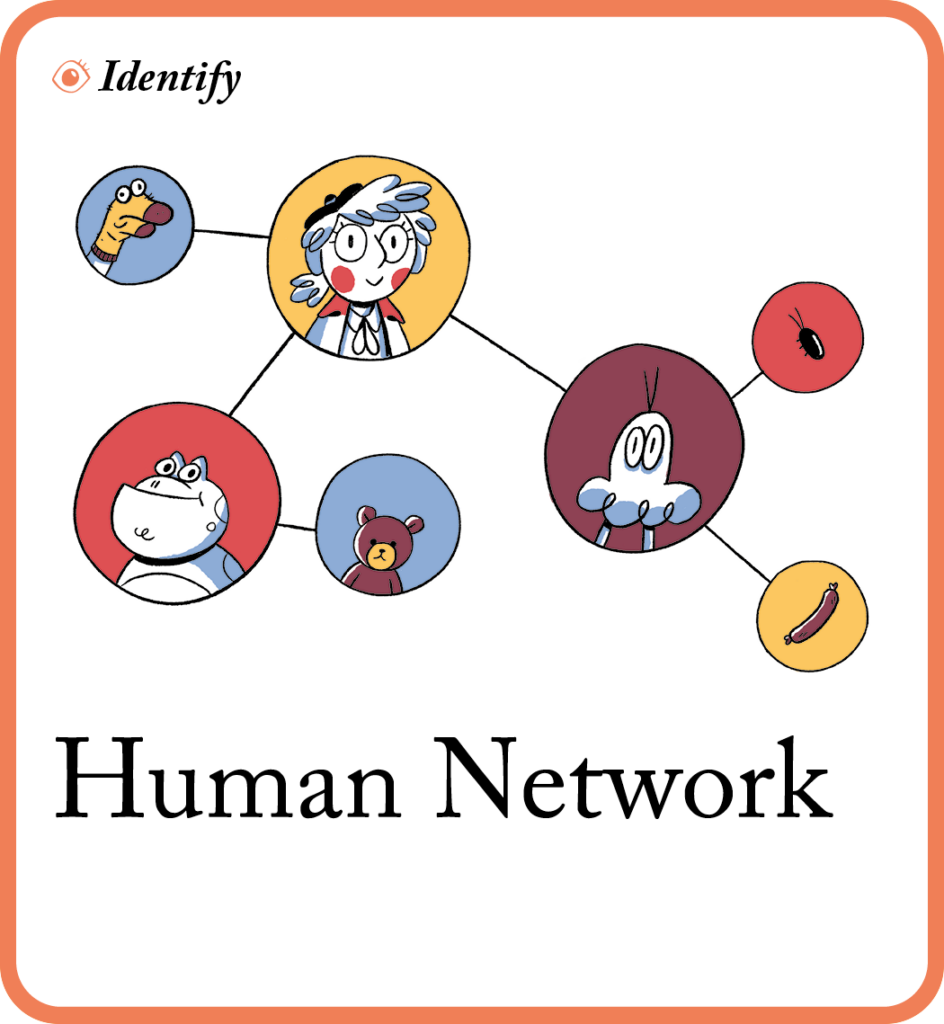
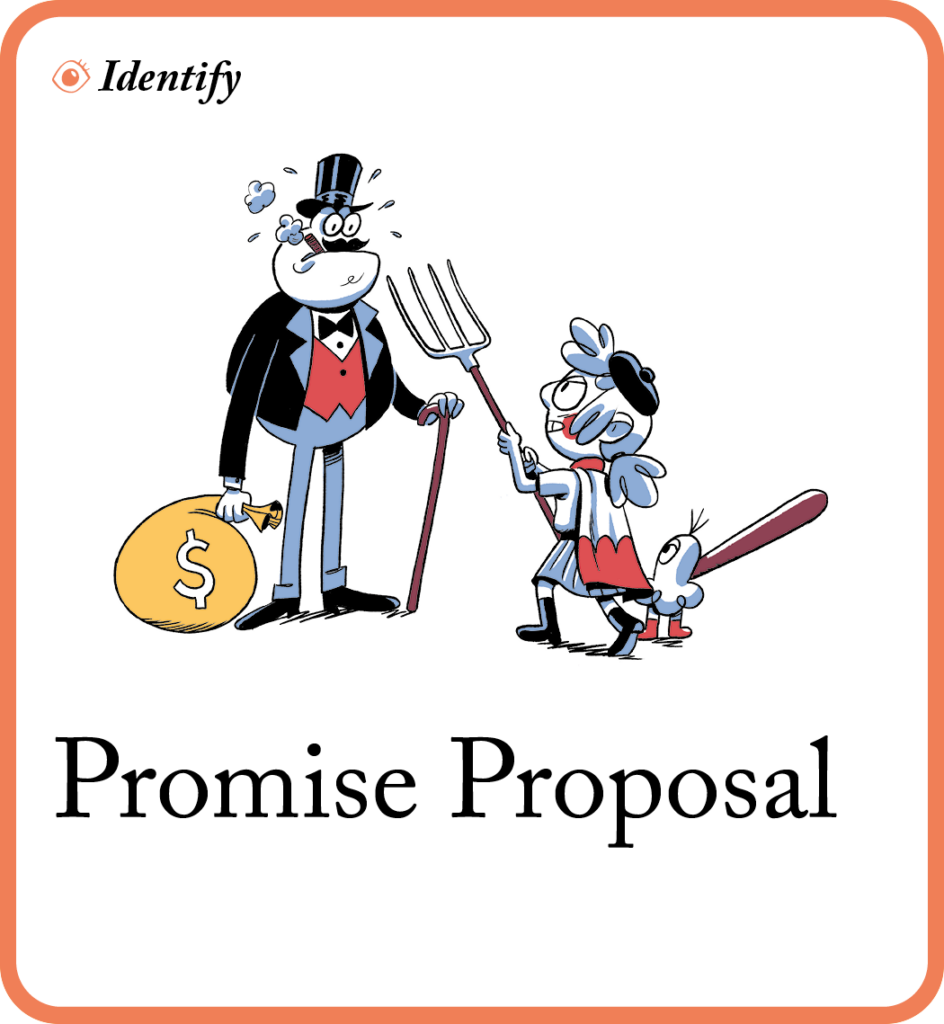
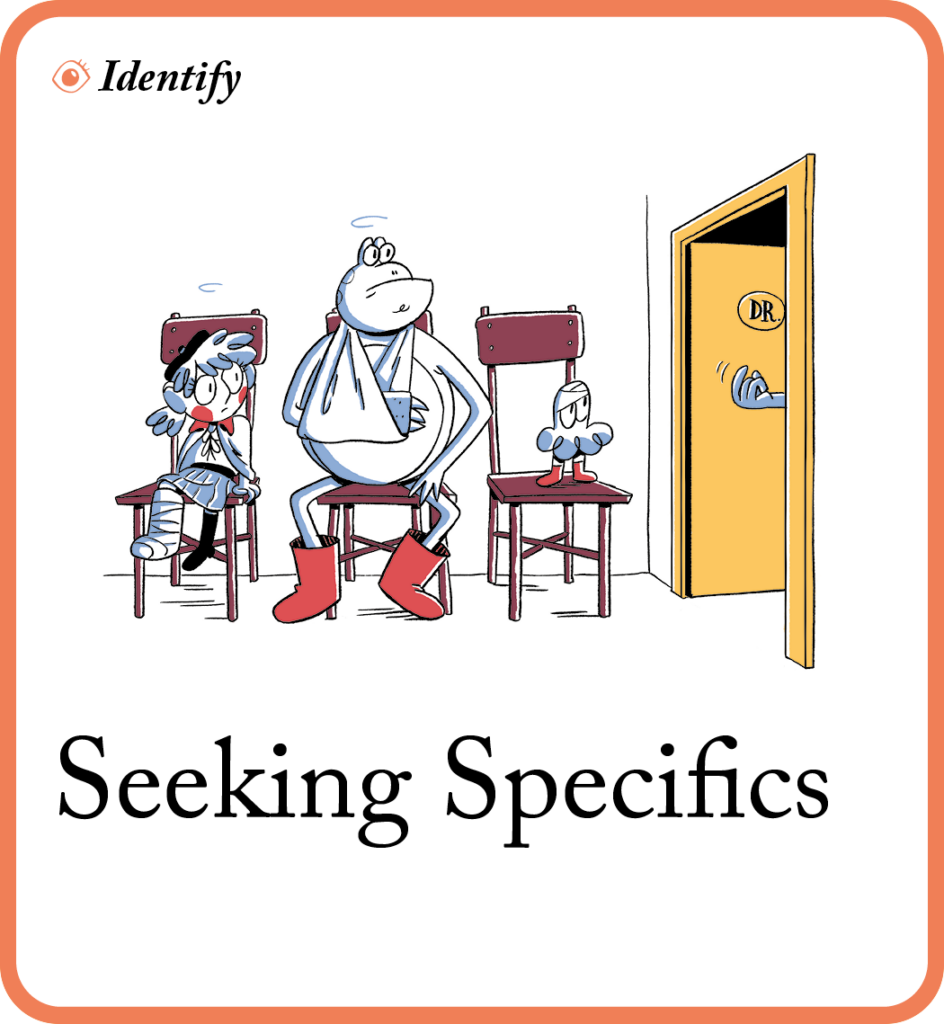

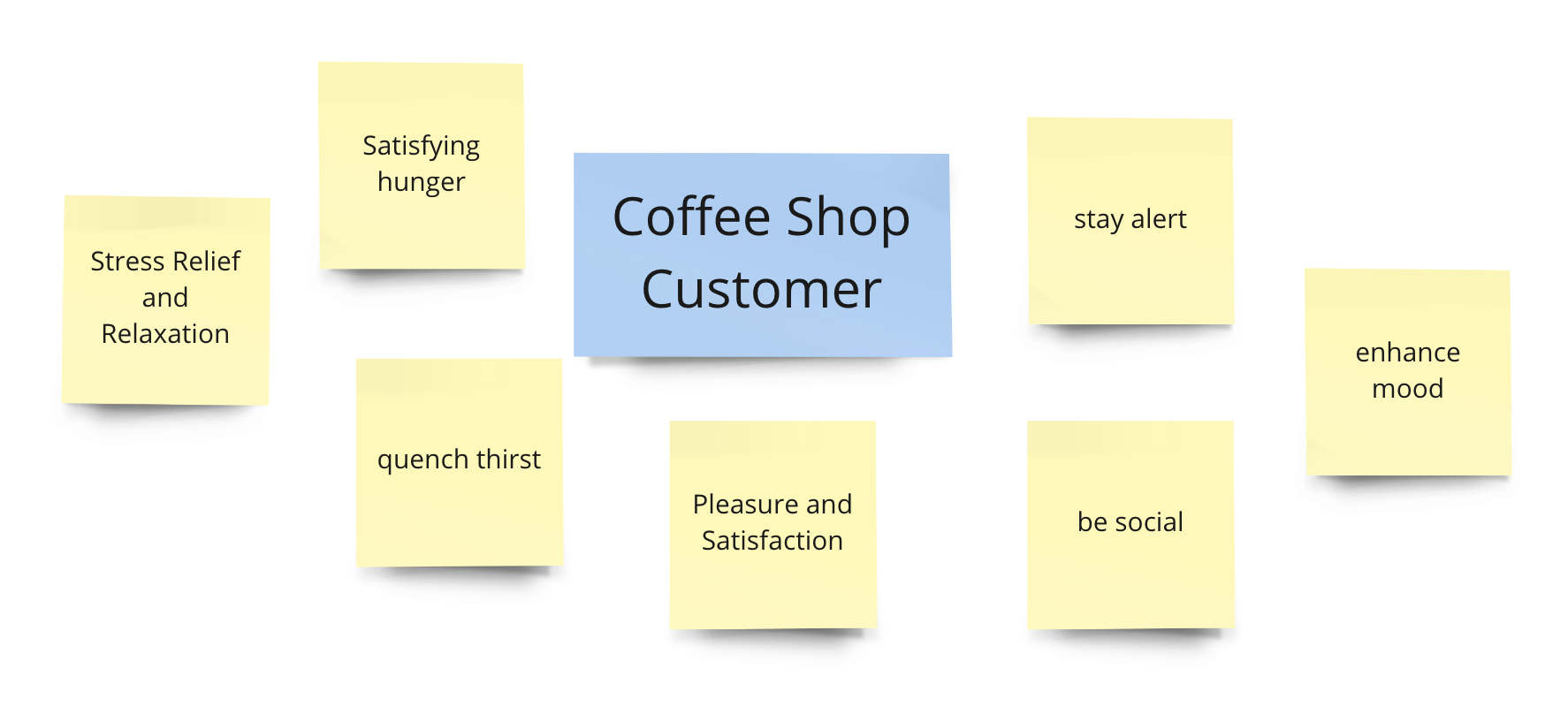
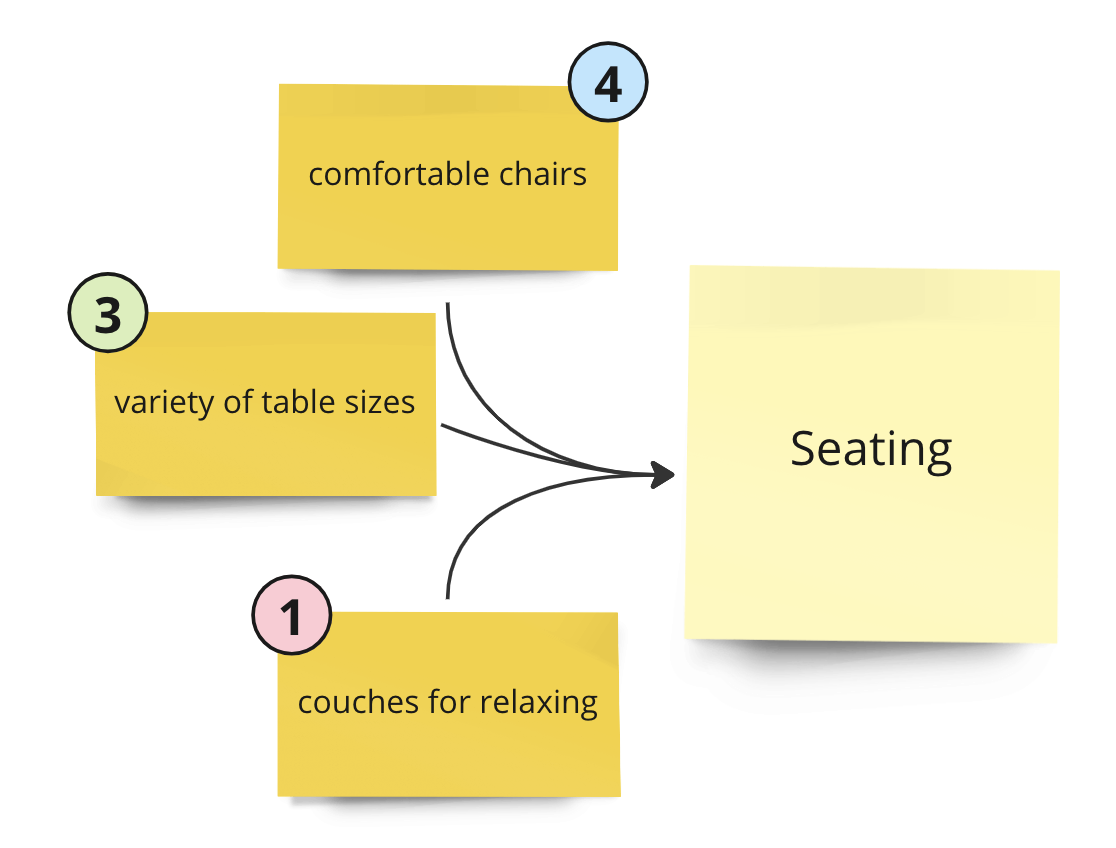
I think these Guides are very helpful. They are good examples on how to structure several Pips Deks.
Keep doin it!
As a writer, I think this is an amazing tool. The fact that it is in a tangible form you can handle will really help kinetic learners. I’ve never seen a resource like this and i am curious to see the future of this company